A fast-growing perennial evergreen hedge has an undeniable advantage in terms of decorativeness in comparison with a conventional fence. Without complicating the schedule of gardening work, it will be possible to get a blank beautiful wall that reliably protects from street noise and dust. Non-falling perennials are beautiful at any time of the year, even when the garden is empty.
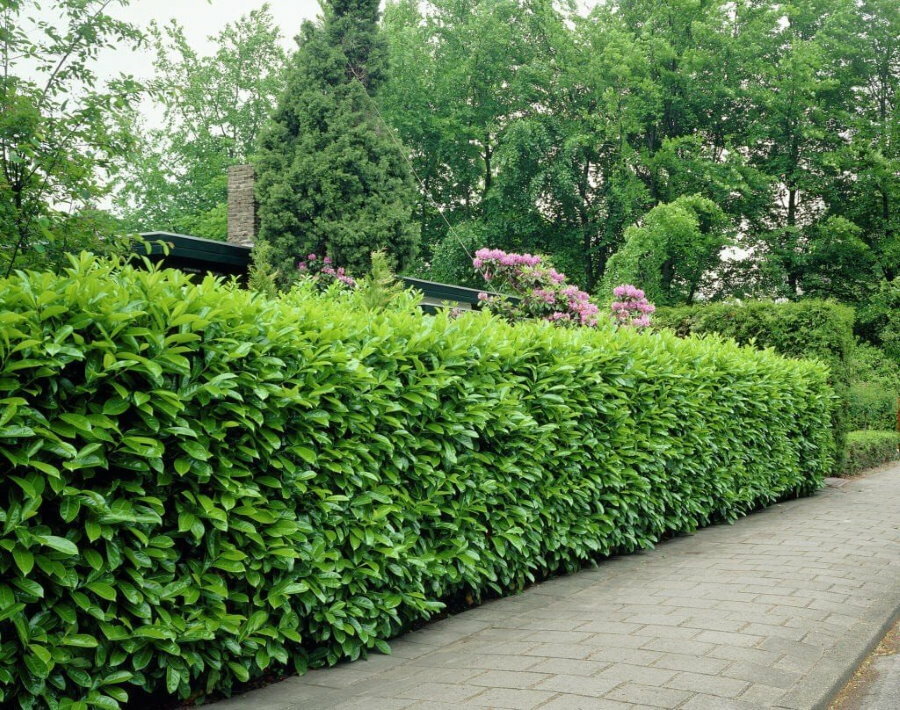
A hedge is perhaps the best solution for those who prefer natural beauty.
The use of hedges in landscape design
Content
- The use of hedges in landscape design
- Evergreen selection - examples of fast growing species and varieties
- Deciduous evergreen perennials
- Fast growing climbing plants
- Hedge shrubs
- Coniferous plants
- Rules and recommendations for the care and shaping, pruning of hedges
- Photo examples of beautiful hedges in the design of the site
- Video review of the best plants for hedges
- Photo of hedges in landscape design
Green fences are of two types. An unformed, fast-growing perennial hedge has its own charm. These are mainly bushes that form a conical, spherical or pyramidal crown for 3 years. Decorated fences look orderly, neat, used for French gardens and parks.

A hedge can divide the garden into zones or decorate any architectural structure on the site
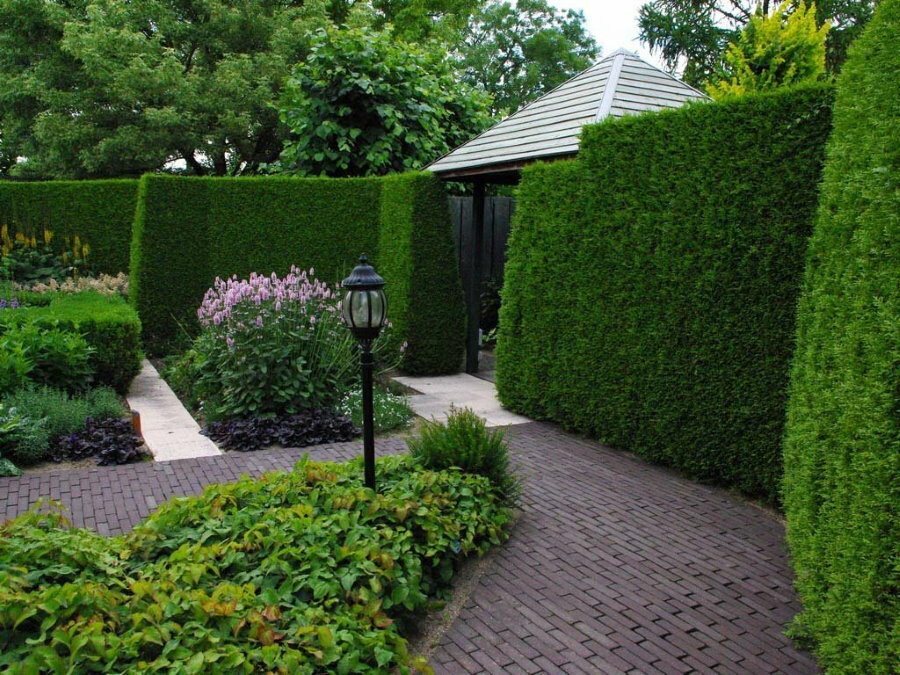
With a little imagination, you can create a flowering or coniferous wall, low or high, straight or curly
For green fences, when decorating lawns, zoning, shrubs that need frequent pruning are often used, from which they form living sculptures, decorative elements. Certain types of trees that grow slowly are planted around the perimeter. You can hide a vegetable garden behind a living wall. Climbing plant species are planted near the high walls of buildings and structures.
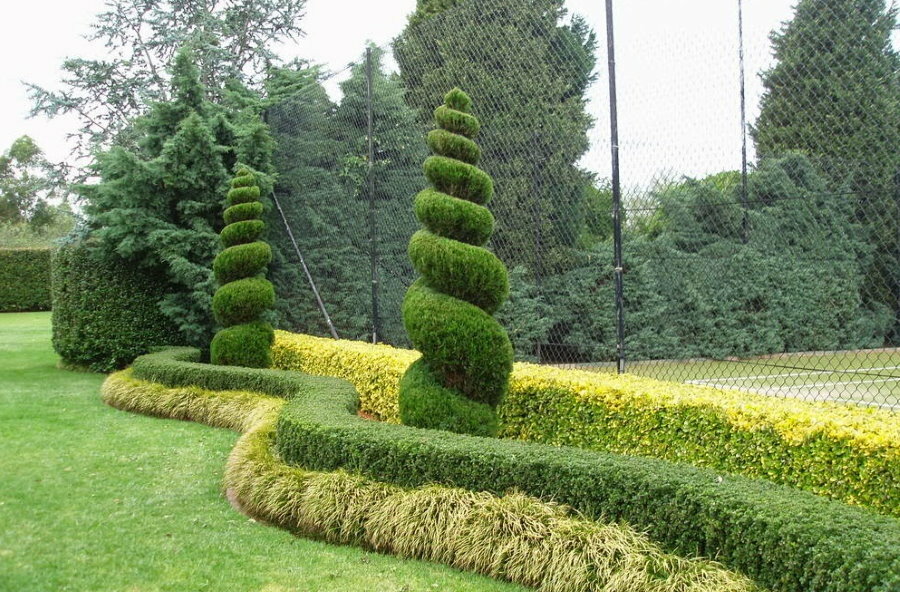
The height of the hedge can be any, it all depends on the preferences of the owners of the site
Evergreen selection - examples of fast growing species and varieties
A well-formed evergreen hedge can combine several types of crops: shrubs, trees with different colors and leaf shapes. Among the popular plants are non-falling representatives of various botanical groups and families.
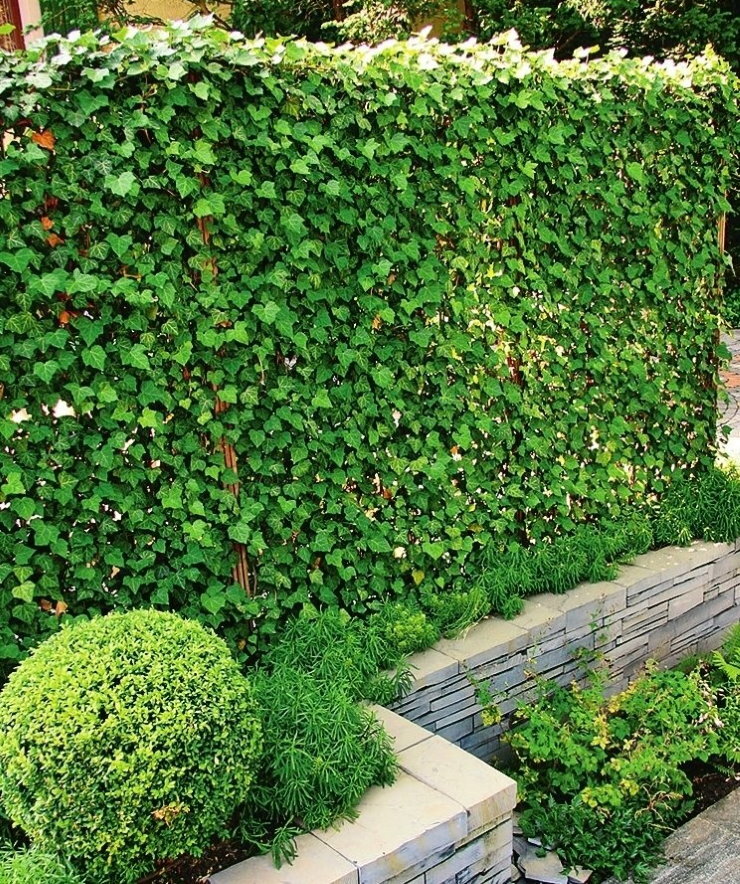
Both annual and perennial plants are used to create hedges.
Deciduous evergreen perennials
Trees are rarely used in landscaping. The hornbeam is distinguished by a uniform density of shoots throughout the trunk, the beech is bare from below. The trunks require an additional row of undersized shrubs.

Hornbeam grows well on any soil, both in the shade and in the sun
The hornbeam is cold-resistant, it forms well, although it sheds part of the foliage in regions where there are night frosts, it does not lose its decorative effect. The beech forms a dense crown, which can be shaped to any shape.
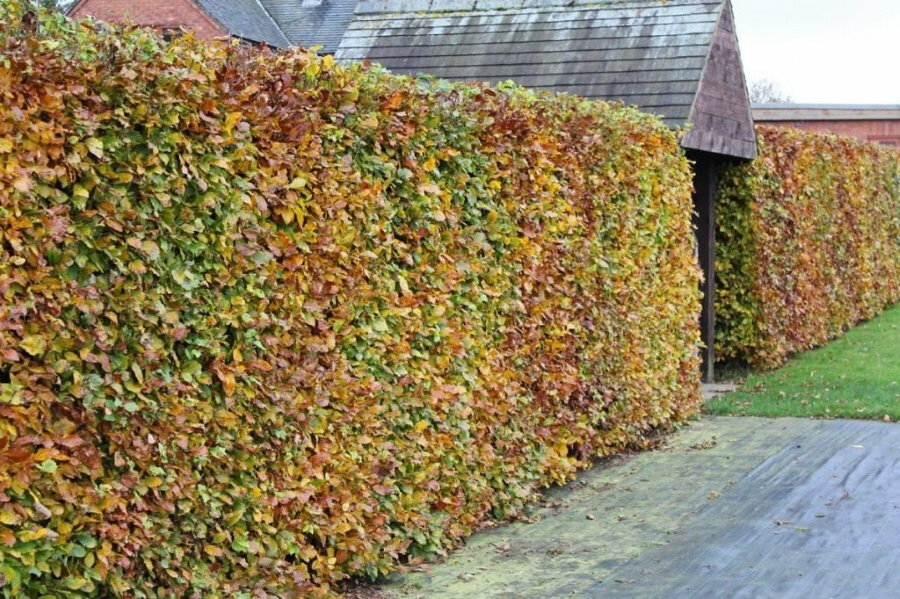
Beech lends itself well to shearing and shaping, suitable for creating high walls and curly shapes
Cypresses are especially decorative, they tolerate pruning well, but they do not really need it, they form an even conical crown. Many low-growing and medium-sized varieties up to 3 m in height have been bred for fencing garden plots and country estates.
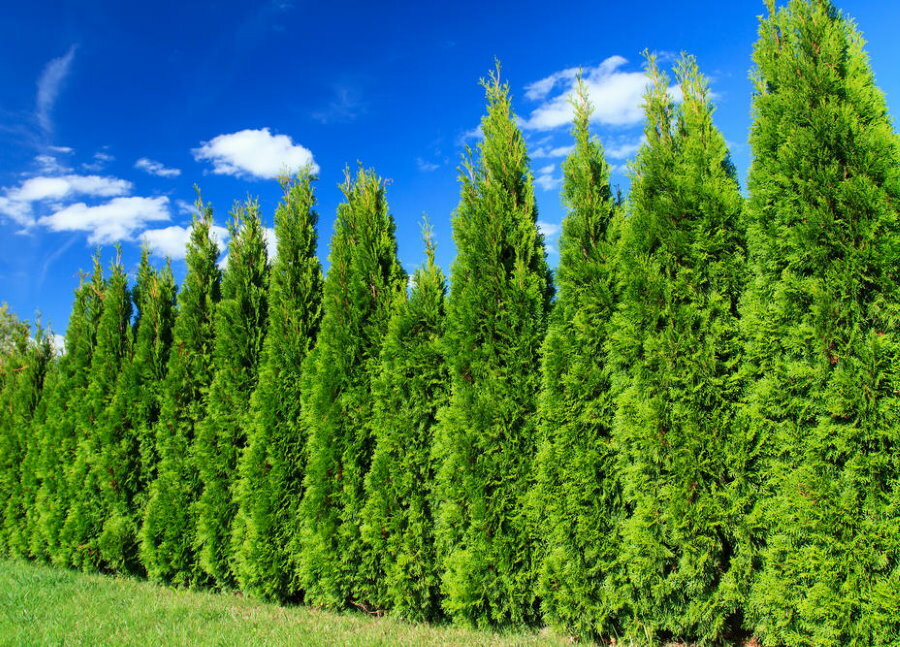
Cypresses are residents of the southern regions and do not tolerate severe frosts
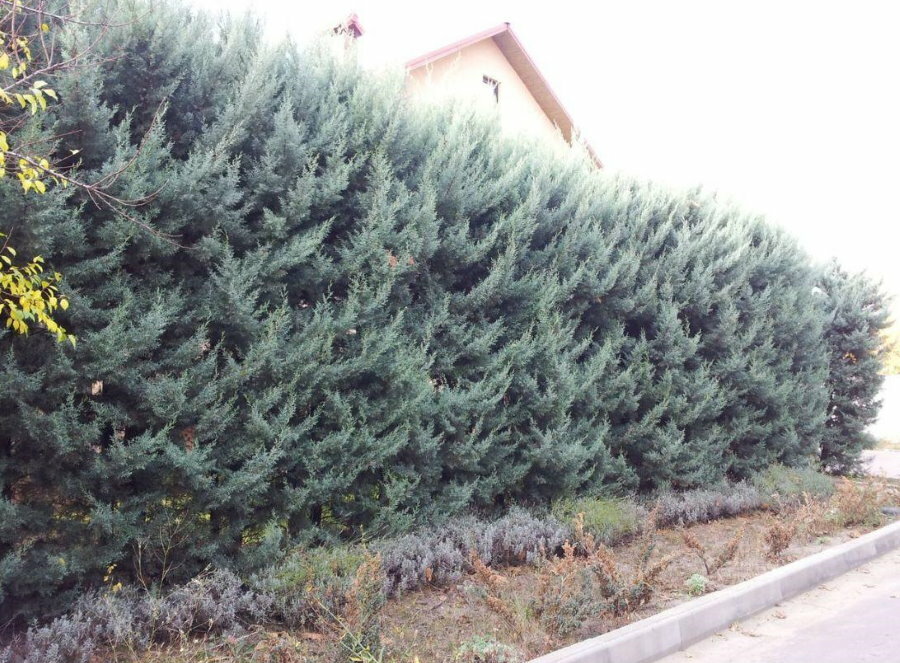
Living wall from Arizona cypress
With a large length of hedges, it is worth choosing unpretentious crops.
Fast growing climbing plants
The use of such landings is a way of quickly disguising an unsightly structure that violates the splendor of the landscape. Bindweeds are planted near mesh fences, resulting in a blind hedge with minimal costs. Vines can grow near columns, arches, arbors, and are used for trellis decoration of open terraces.
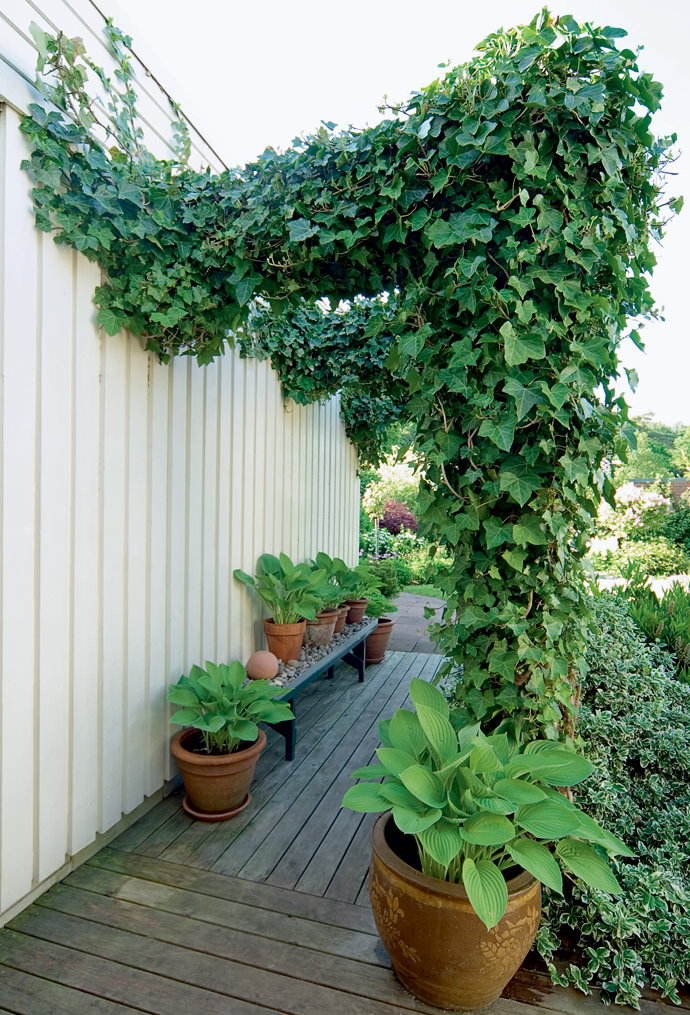
Weaving annuals have the highest growth rate. Some of them grow up to a height of a three-meter wall during the season.
Often planted:
- garden ivy, giving good annual growth;
- hops, decorated with beautiful soft cones that appear in August;
- periwinkle, pleasing with long flowering, a blue floral carpet is formed;
- petioled hydrangea with caps of white or cream inflorescences;
- bougainvillea and other vines that can grow all year round.
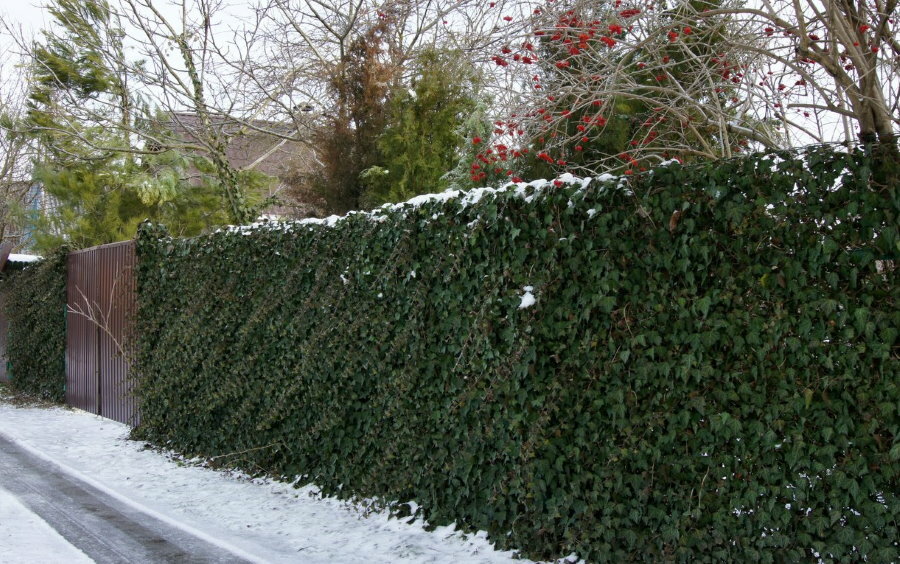
Unpretentious ivy can be planted on both sides of the fence
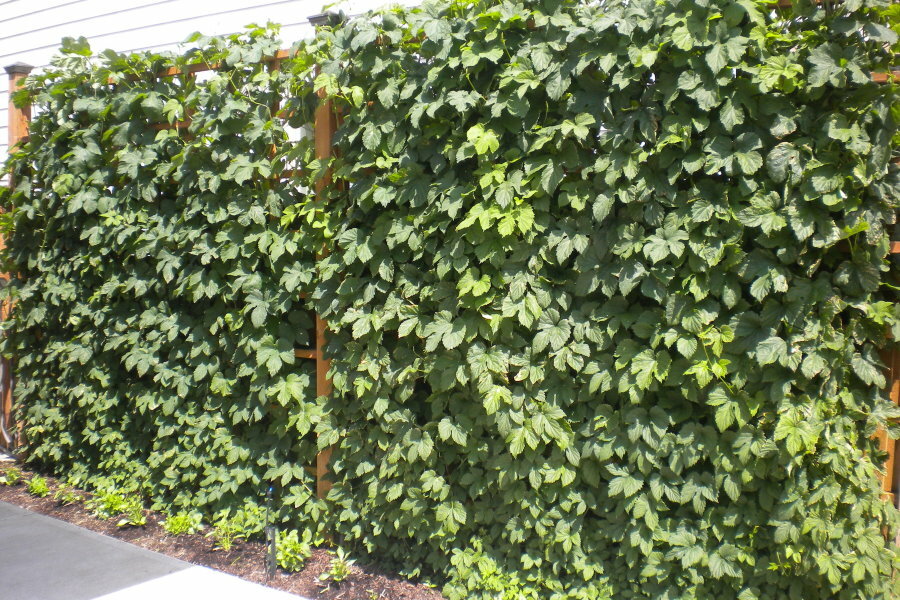
Hops grown on a trellis produce a dense living wall that protects the area from the wind
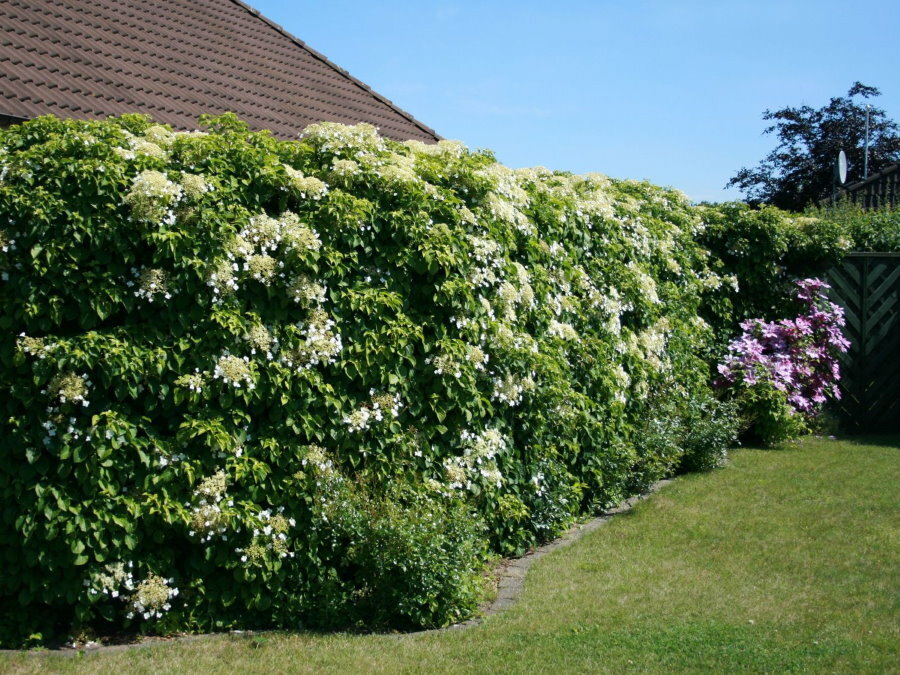
The petiolate hydrangea does not bloom as beautifully as the panicle hydrangea, but it allows you to form rather high walls
The rest of the loaches are also popular: honeysuckle, euonymus, bougainvillea, etc.
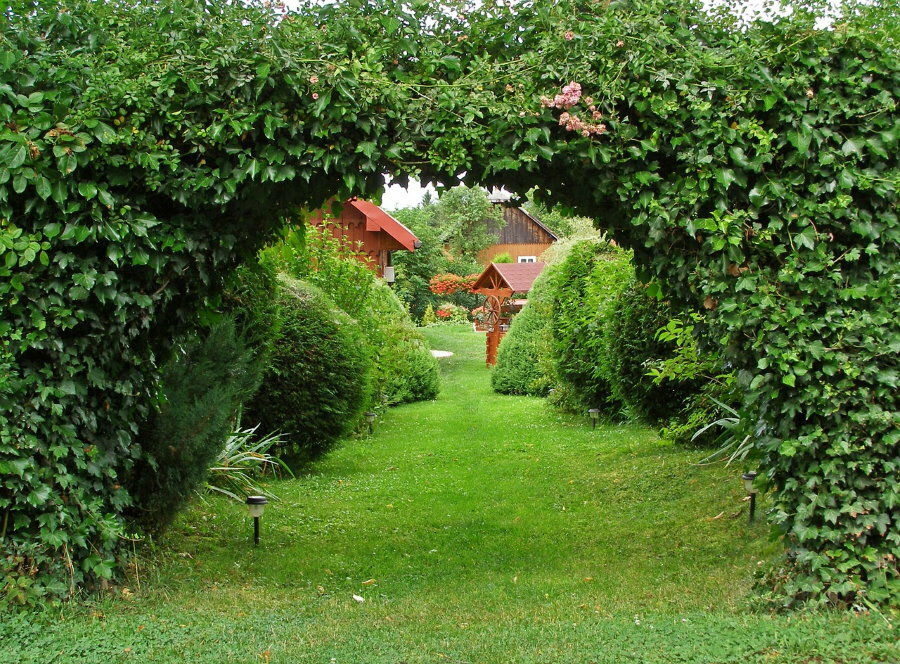
All climbing plants require the construction of a support
When choosing plants, it is worth choosing zoned varieties that are resistant to the peculiarities of the climate.
Hedge shrubs
The very name of the bushes "evergreen" means that the hedges will delight you throughout the season. It is not difficult to grow such crops. As a rule, foliage renewal occurs gradually, unnoticed by others.
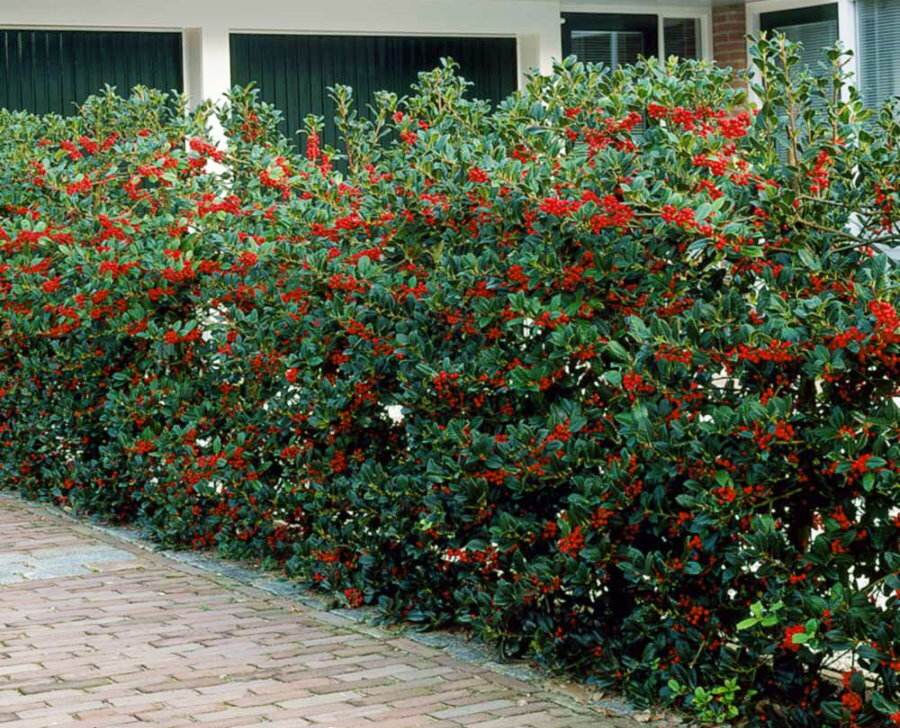
Holly hedge during fruiting
Gardeners choose non-falling varieties of boxwood for their plots (the plants are known under another name "buxus"). Holly with carved leaves and red berries always looks advantageous. Colored forms of barberry create a unique flavor, complement design solutions for landscape decoration.
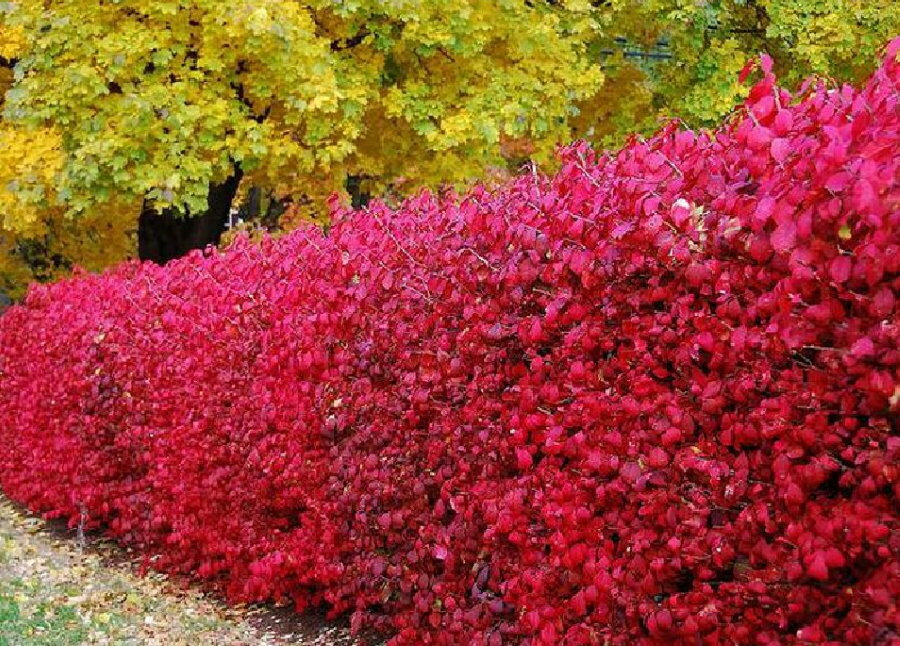
Picturesque barberry wall in autumn
Around the perimeter, euonymus, a viburnum vesicle are often planted (there are many species with colored leaves). Common privet is popular, which can be constantly cut, creating complex shapes, brilliant cotoneaster, cherry laurel, blackthorn and other shrubs.
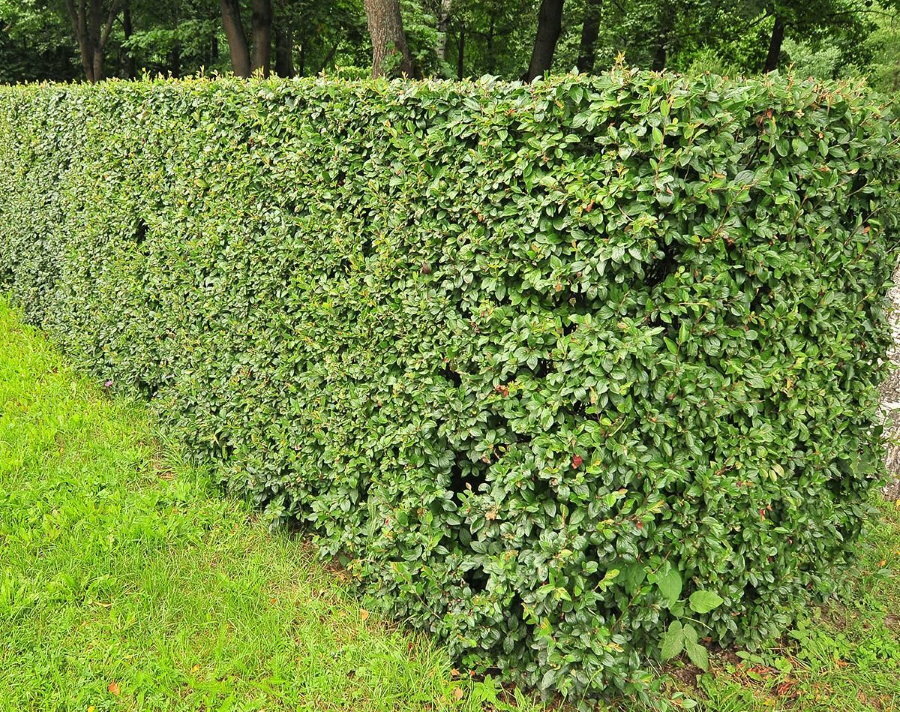
Green fence of shrubby cotoneaster bushes
Some ornamental plants produce attractively poisonous fruits.
Coniferous plants
These evergreens will decorate the area in the middle lane. Many low-growing, ornamental types of spruce, fir, pine have been created. Thuja is popular for hedges. Suitable for creating a fast-growing fence yew, cypress and other crops.
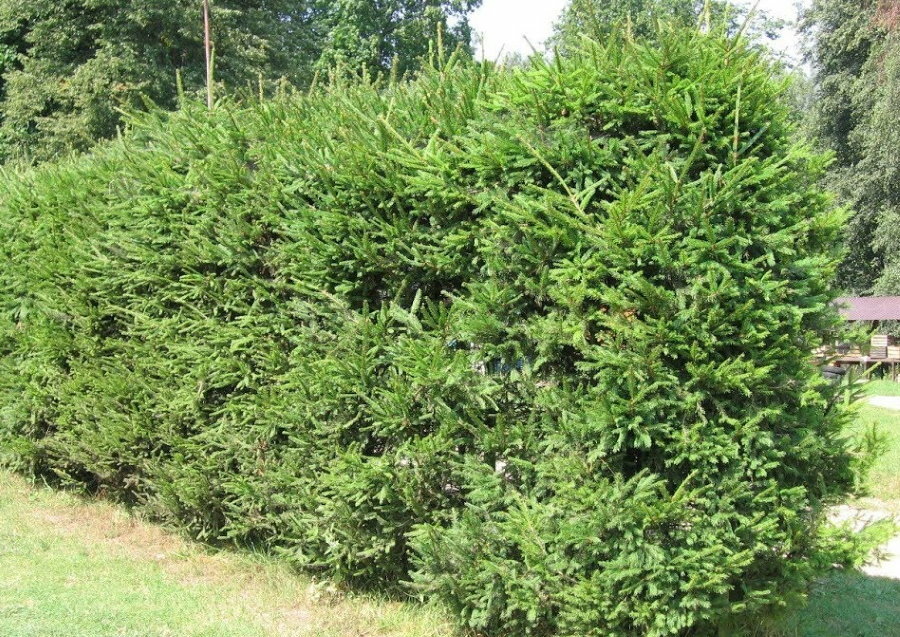
An evergreen spruce hedge is usually planted on the north side of the site to protect the garden from cold winds.
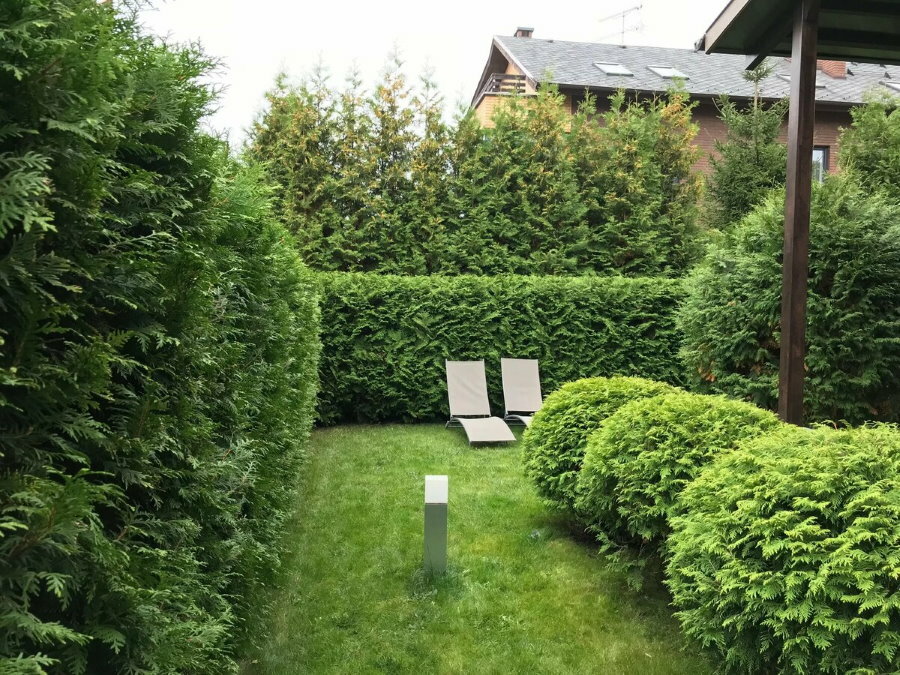
Thuja hedges will adorn any site
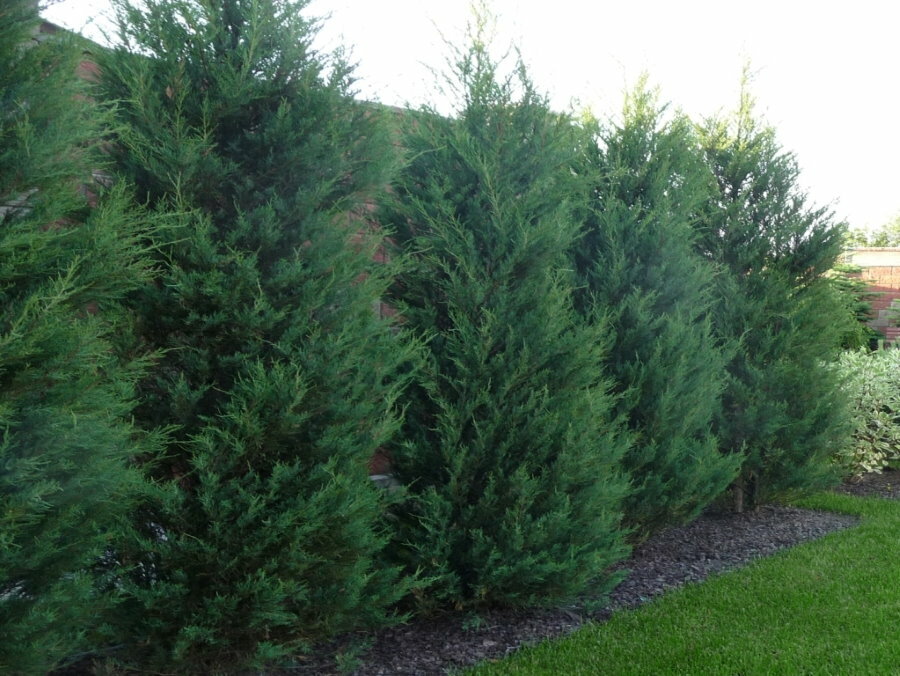
Evergreen juniper creates luxurious enclosures, adding a true forest scent to the garden
It is better to grow junipers in several rows to avoid deformation of fences under snow load.
Rules and recommendations for the care and shaping, pruning of hedges
The first haircut is carried out for seedlings, at least two years old. Initially, the shoots are shortened by 1/3 of the length. Then, every spring, sanitary pruning is carried out - damaged and dry shoots are removed, the crown is trimmed for abundant branching. When creating sculptures or complex shapes, it is allowed to carry out a haircut from spring to late autumn.
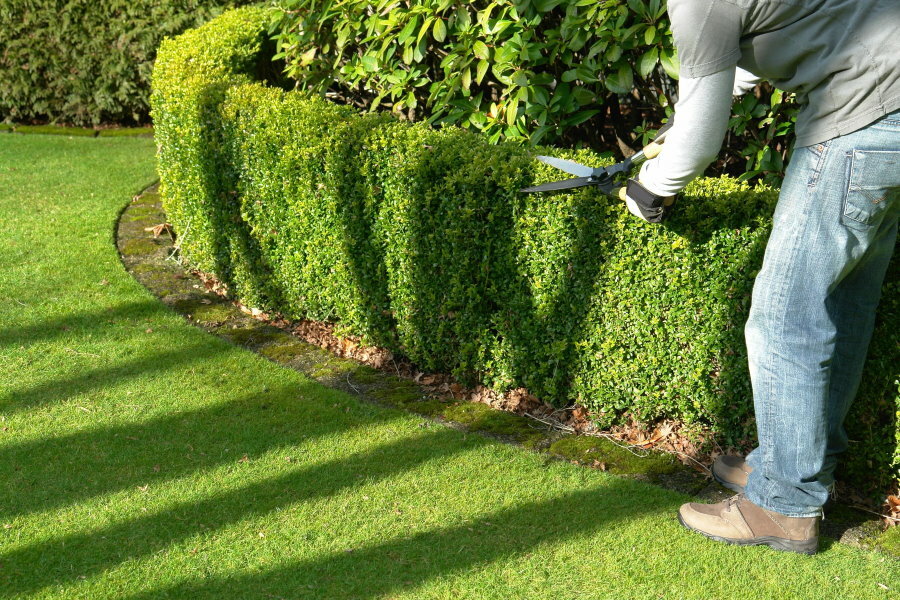
Trimming a hedge is a painstaking task that requires patience and skill.
Coniferous trees pinch the crown at the 3rd year of life to form a dense crown.
Photo examples of beautiful hedges in the design of the site
Protective hedges located along the perimeter of the site are formed with a section in the form of a rectangle (the most common shape), triangle or trapezoid. Rounded shapes look elegant. Plants are picked up with thorns or forming dense thickets.
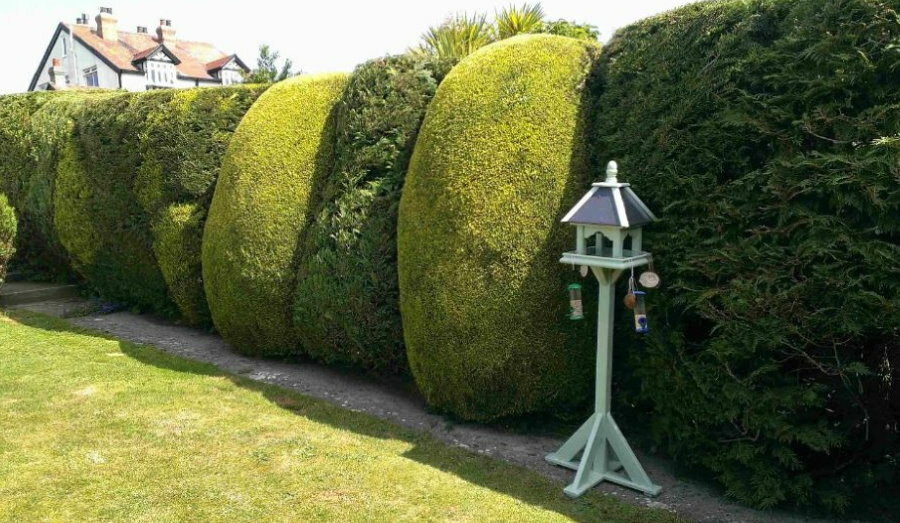
A fast-growing hedge - an inexhaustible source of inspiration for gardeners
Landscape fences used for zoning the inner territory of the site are given a wide variety of forms. Fantasy solutions, combinations of geometric shapes, experiments are in trend. The choice of plants depends only on the design idea and the conditions for growing crops.
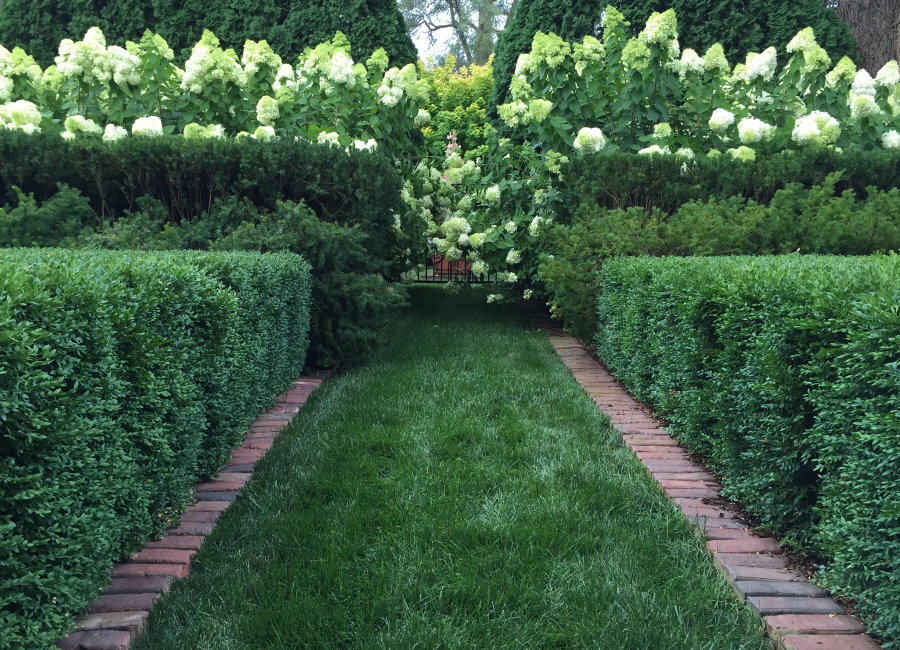
Multilevel hedge made of trees and shrubs
Decorative hedges serve as a screen; beautiful vines are usually planted in one row.
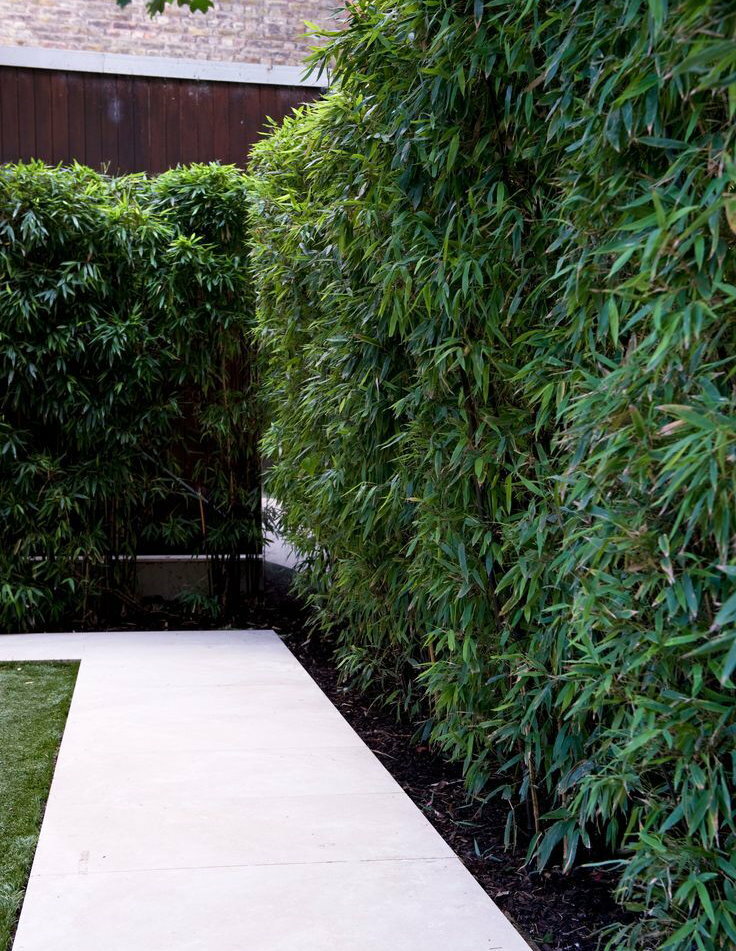
A lush hedge can be made from a fast-growing willow in just a few seasons.
Wood walls are made to breathe in order to preserve the wood. The strings are pulled over the console mounts.
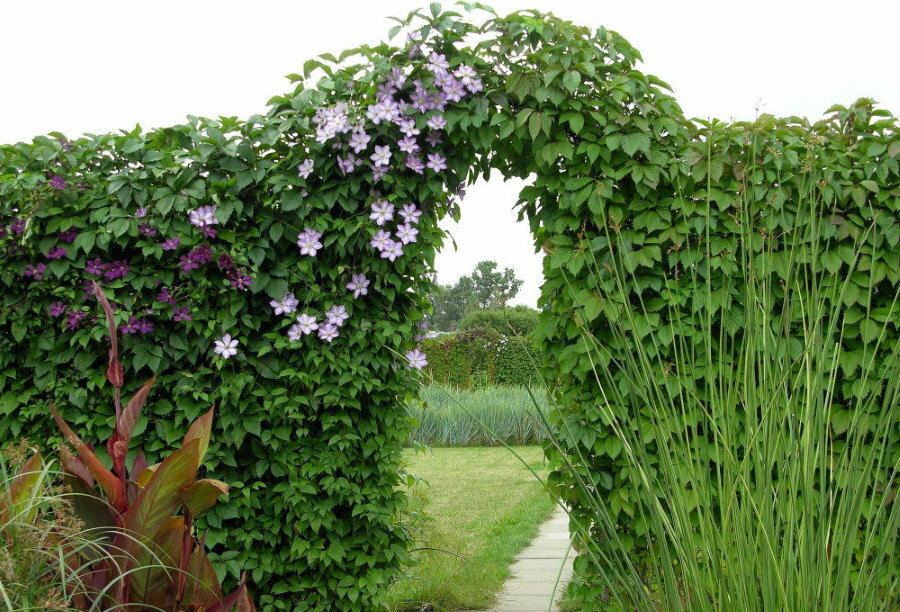
Climbing plants can be combined with each other. For example, a living wall of clematis and maiden grapes looks interesting.
For decoration, use greenery with carved leaves, strong branching. Such hedges are sheared in the spring, sanitary pruning helps to maintain an aesthetic appearance. Coniferous trees and shrubs create an unusual forest color.
